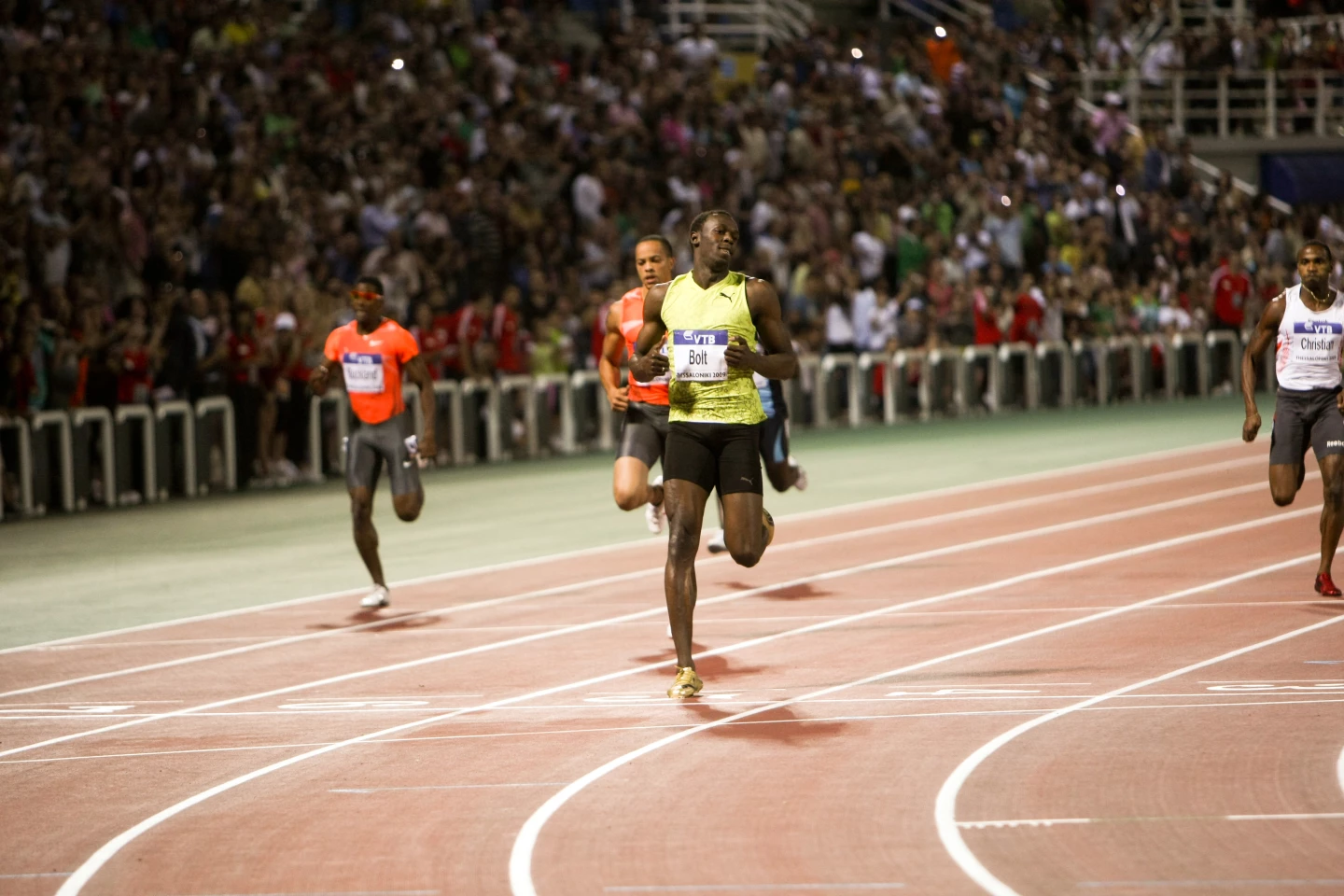The Honourable Usain Bolt (Order of Jamaica; Commander of the Order of Distinction) is often held out as the world's fastest man. The reigning Olympic champion in the 100-meter and 200-meter sprints as well as a member of the Olympic champion 4x100 meter relay team, Bolt is the first man to win six Olympic gold medals in sprinting, and is a five-time world champion. Long and lanky at 6 ft 5 in (2 m) tall, he towers above the (mostly) much shorter sprinters. How has he managed to come out on top for the past five years? A team of physicists from the Universidad Nacional Autonoma de Mexico (UNAM) has analyzed Bolt's past performances in the 100-meter sprint to understand what makes a record-breaker.
Beginning with the 1964 Olympics, the track and field world switched from manual to automatic timing of sprinting events, resetting the racing times so that comparison with earlier times is not consistent (From 1977, all major track events were automatically timed). In the 43 years between that time and the advent of Usain Bolt onto the major sprinting events, the 100-meter world record has fallen from 10.06 seconds (Bob Hayes) to 9.74 seconds (Asafa Powell). The record was shrinking by about 0.008 seconds per year.
Usain Bolt took his first 100-meter world record in the 2008 Reebok Grand Prix with a time of 9.72 seconds. His remarkable achievement, however, was to reduce that time to 9.58 seconds just a bit over a year later – a rate of about 0.10 seconds per year. That record stands today.

The key to sprint speed is the horizontal force the sprinter can generate. When that force is equal to drag on the runner, the runner cannot achieve a faster time. The force out of the blocks is often larger, as pushing against the blocks is more efficient than pushing against a flat surface. As a result, a sprinter can rapidly approach their top speed very shortly after a good start. The UNAM group has extracted some of these factors for Usain Bolt's 2009 IAAF record-setting run, based on times and locations every tenth of a second (supplied by the IAAF.)
First, Bolt comes out of the blocks with an acceleration of nearly one g. This is driven by a force of 817 N (184 lb). This isn't terribly surprising, as the legs are used to operating under a load of one g – it is simply a matter of training the muscles to work fully for horizontal propulsion. What is more surprising is that the UNAM analysis shows that Bolt is able to maintain that level of force for horizontal motion for the entire 100-meter event.
Maintaining a constant force implies that Bolt, at some point, will slowly approach a maximum speed. His acceleration falls essentially to zero between four and five seconds from the start of the race, and he maintains a speed of some 12.2 m/s (27.3 mph) throughout the remainder of the race.
Mechanical power is another measure of interest, which is proportional to both the velocity and the acceleration. When this is extracted for Bolt's best official run, the maximum value of power is an amazing 2600 W (3.5 HP). He achieves this less than a second after the start of the race, after which the power falls rapidly. Bolt isn't working less hard after this first peak. Rather, the air drag grows very rapidly, to the point that nearly all of Bolt's force goes into fighting drag effects after the first few seconds.

It is interesting to look at what the overall effect of drag is on a race. The total energy Bolt imparts to his motion during the 100-meter sprint is about 6.4 kJ, or 1.8 w-hr. However, using the observation that he seems to apply an essentially constant force during the sprint, the energy he delivers for the sprint is a much larger 81.6 kJ (22.7 w-hr). This represents an average power of 11.6 HP! Only about 8 percent of Bolt's effort goes into moving down the track – the remainder is totally used up in overcoming drag forces.
Slight changes in the air drag will clearly change this balance to a more effective run. This is why many past records have been set at altitude, and why such records are usually taken with a grain of salt. It is also fascinating that virtually all sprinters run in a totally upright position, which one would think would increase air drag. It would also seem that Bolt's great height would increase air drag, but it does not appear to be a problem for him. Could a simple change in the running outfit, to make it fit more tightly or present a smoother surface to the air, result in less drag, and faster times? Such matters are largely regulated to keep competitors on an even playing field, but there could be changes in response to the advent of new materials.
Despite the analysis, none of this explains why Usain Bolt dominates the shorter track events so thoroughly. If anything, it appears that he may have handicaps concerning excess air drag. However, like so many highly successful people, he goes ahead and does what he wants, instead of what the numbers tell him he can do. This is the Olympic spirit, and the reason he has been called the world's greatest athlete.
Source: European Journal of Physics






